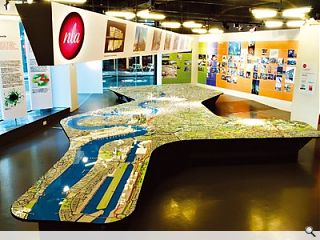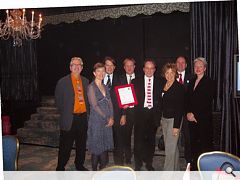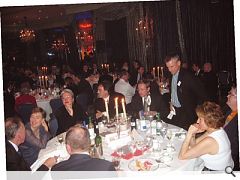The Rule of Urban Design Centres
4 Jun 2008
A CENTRE FOR URBANISM: All great cities have one - why doesn't the "European City of the Year?"
There are many examples of excellent initiatives across Europe (and indeed the world) of cities that have an urban exhibition centre that combines historical understanding with being a showcase for ongoing events and new possibilities. Among these are NAI in Rotterdam, Pavillon de L’Arsenal in Paris, New London Architecture Centre in London, Medway Renaissance in Medway, URBIS in Manchester, The Lighthouse in Glasgow and Place in Belfast. These are not purely architecture centres; rather they are focused on the urban realm in its holistic sense, and do not concentrate on individual new buildings.
Such centres invariably feature a large model of the city, so that people can understand its shape and form, and to which can be added new proposals for study, comment and debate. There is also usually a large exhibition space for the display of urban planning projects. This is backed up by debates, lectures and seminars, so that such centres becomes an interaction point for a full range of urban planning issues.
To prevent them becoming vehicles for local political agendas, centres tend to have a mixture of public and private funding. The New London Architecture Centre in London is almost entirely privately funded with some CABE funding which helps to keep a degree of involvement and participation across the board as well as maintain an impartiality around the projects shown. Glasgow’s Lighthouse has also enjoyed success, but though it does show some urban projects, it is substantially an architecture centre. My view is that the Edinburgh centre should focus on urban issues, thus complimenting Glasgow. The two great Scottish cities can then work together, one on the architectural design front, the other spearheading Place Making.
A new ‘Urban Room’ exhibition centre in Edinburgh seems totally justified. Not only is it a great capital city, but it is also one of the greatest historical achievements in urban design. For this reason, The Academy of Urbanism honoured Edinburgh with the best European City Award. Since then, The Academy of Urbanism has visited Edinburgh to meet with the Design Champion and other city leaders, and discuss the possibility of such a centre being set up. Over the past four years we have had many conversations which have generated much enthusiasm about the possibility of the creation of a centre for urbanism. John Thompson from The Academy of Urbanism, is keen to see the Academy's involvement as have, Nick Barley at The Lighthouse, Dave Anderson at SEEL, Sue Stirling at the Scottish Government and Ian Gilzean, Scotland’s Chief Architect, but so far nothing has materialised. It is important to find the right place. Ideally, it should be centrally located with a generous amount of space to accommodate the model and other permanent exhibition elements. It should be a place where anyone visiting Edinburgh can go and see what the city looks like in model form. It is astonishing just how gripping old maps and a model of the existing city can be, and how the history of a place can stimulate discussion among both locals and visitors about what the city is today and what it could be in the future.
Increasingly, digital presentations are also coming to the fore. In Glasgow there are initiatives with Glasgow Council, which could well be applied to Edinburgh, showing the effects of changes to skyline, traffic movement and density patterns, all exhibited in a more dynamic form. Considering the strength of the private sector in Edinburgh and its current economic growth, there would seem to be the need, justification and support for such a venture. In the original Design Champion Manifesto of 3 June 2004 (report to planning committee), one of the ideas that was going to be targeted was an ‘Ideas Pavilion’ which was due to be up and running by November 2005. We must make it happen.
|
|






